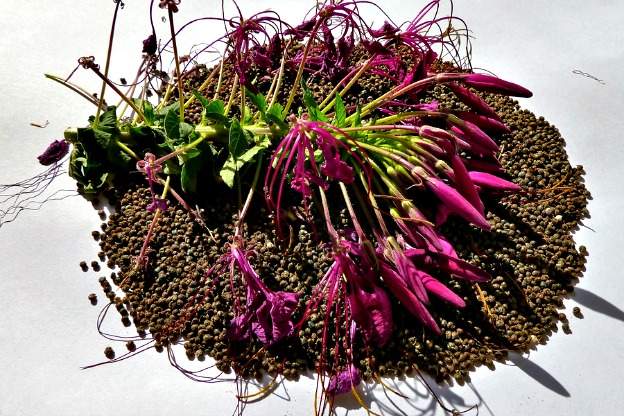
As I was cutting down my asters this fall, I cut off lots of the fluffy seed heads and just scattered them in other parts of my yard, since perennial asters grow easily from seed.
If you want to get good results from self-sowing plants in your garden, however, it pays to make the ground receptive, even when sowing seeds of plants that self-sow easily.
Remove any existing weeds and loosen the soil to about eight inches. Then scatter the seeds and use a rake to gently move them into the loose soil. They will lie dormant until awakened by the spring warmth.
Many annual plants self-sow: alyssum, cleome, cosmos, larkspur, nicotiana, to name just a few. But be careful not to use a mulch that has a seed germinating deterrent in it, or the seeds that fall from your existing plants won't have a chance at germination.
Verbena bonariensis is an annual, except in zones 7-10, but it's a stalwart self-sower in my zone 5 garden. Its tall narrow stems, sparse foliage, and deep purple flowers make it welcome wherever it comes up in my yard.
Zinnias and marigolds are reliable self-sowing annuals, too, if you stop deadheading in early fall.
There is something very satisfying about seeing second-generation plants from self-sown seeds!









